|
Title: | Combined Wagon Datafile / UK Wagons 20xx |
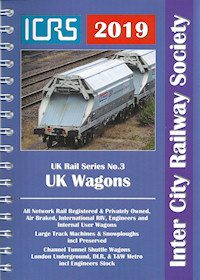
|
| Author: | David Sharpe, later Scott Yeates, Trevor Roots, Alex Ford |
| Publisher: | Inter-City Railway Society (initially with HB Publications) |
| Format: | Book |
| Subject: | Wagons |
| Category: | Numbers - Current |
| Spec: | A5, 126-232 pages, spiral bound, laminated covers, colour photos on cover |
| Publication date: | c.2005-present |
| Summary: | As far as I know, these were the first books to list all UK wagons in a single volume. They have been regularly updated and offer a useful level of detail. |
| Review: | Wagon numbers books published from the mid-1980s onwards tended to cover the fleet in several volumes. However, by the early 2000s the fleet had contracted to the point where it became possible to list all numbers in a single book. Among the first to do so was the Inter City Railway Society, which at the time was producing books in collaboration with HB Publications. The Winter 2005 Combined Wagon Datafile was said to be the sixth edition but was also mentioned as being the first to have everything in a single book. Spiral bound with 208 pages and a very clear layout, this book listed the air-braked, private-owner and RIV fleets, then covered the departmental series and the remaining B-prefix and pre-nationalisation wagons. Finally, the CEPS (track machines), departmental coaching stock and Internal User series were detailed, the last three pages dealing with the Channel Tunnel shuttle wagons. This seemed to me a remarkable feat, especially since the information included individual TOPS code variations and (most) previous identities.
For the next edition (2007) an effort was made to amend the presentation to make it easier to find numbers. Sections were arranged in terms of the length of the numbers, starting with the 4/5-digit private owners. However, also included within this were wagons that had 5-digit numbers in the departmental CEPS series (such as the DR925xx rail crane wagons). Track machines with CEPS numbers continued to be listed later in the book, meaning the CEPS series was effectively split in two. Similarly, all 6-digit numbers were shown in order. As well as combining the air-braked and B/DB-prefix series, this meant that the few remaining pre-nationalisation wagons were somewhat scattered about. The RIV and other sections were as before, and coverage of London Underground engineers stock was added. In a positive move, previous identities were now included in all sections (where relevant and known).
From 2010 both the ICRS and HB Publications started producing titles independently. The ICRS book was No3 in a series that also covered locos, units and coaches. Continual improvements were made to the layout, format and fonts, aiming to reduce the page count without sacrificing detail and clarity. For example, prefixes were omitted from most wagons, while former identities were only shown if the change happened less than 6 years previously. A very useful extra feature was an indication of which wagons were currently stored out of use. Starting with the 2013 edition, RIV numbers were no longer listed in full, though check digits were still shown. The exchange, country and class codes were given in the heading to each block, saving a lot of repetition. A slightly more debatable improvement was that the order was changed to be based on class codes first, instead of by country code first. For example, 34.71.4966.001-6 now appeared right after 37.84.4962.056-6. |
| Reviewed: | 28/02/2009 by Thomas Young (Comments made by others can appear in the notes section towards the bottom of this page) |
| Sample pages: | (Click on any image to view full-sized in a new window)
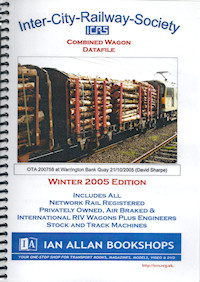
Laminated cover of the winter 2005 edition, updated to December 2005 and referred to inside as the 2006 edition. This had 208 pages
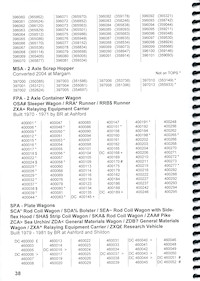
The listings were quite clear, with prefixes and former identities shown, and symbols used to denote TOPS code variations.
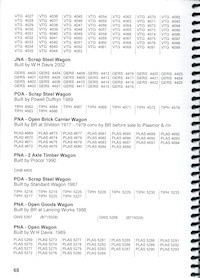
For reasons that were not explained, former identities were not shown for private-owner wagons.
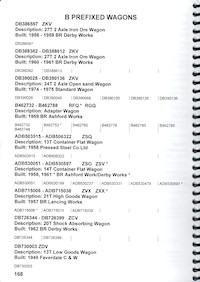
Very few B-prefixed wagons remained.
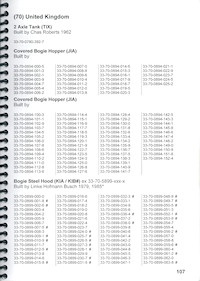
RIV numbers were shown in full, arranged by country code, though with a unique format of seperating each section with a hyphen.
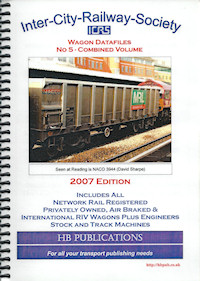
The 2007 edition (232 pages) was to a similar format, although the arrangement of the sections was 'simplified'.
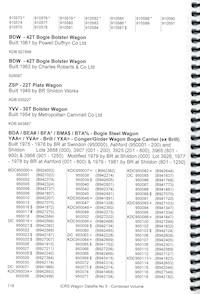
This page shows the effect of merging the various 6-digit number series into one.
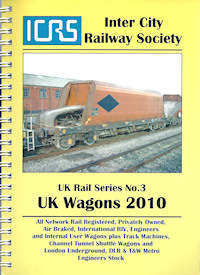
From 2010 the book was published by ICRS and branded as No3 in their UK Rail Series.
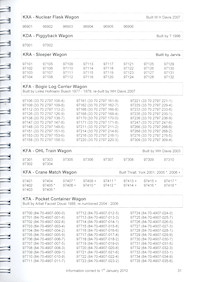
Prefixes were not shown for private owner wagons, although were later re-introduced to the batch headings.
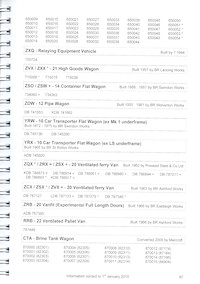
The 6-digit number series were still combined into one, mostly shown without prefixes. This meant, for example, that there was no way of telling the origin of items such as 700724 on this page.
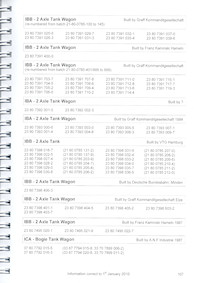
RIV numbers were still shown in full.
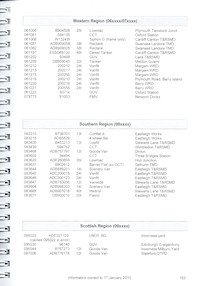
The internal user fleets were listed, though the quantities had reduced considerably by this time.
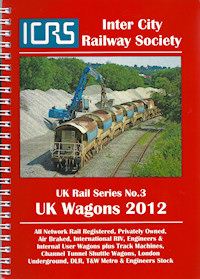
The cover of the 2012 issue, now with 164 pages.
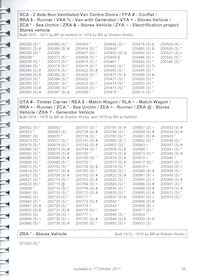
Wagons in storage were now indicated by an (S). Some batches seemed to be mainly out of use.
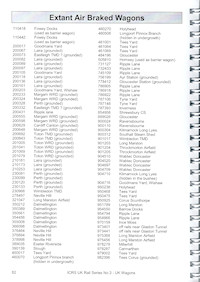
A new feature was a listing of extant (but un-registered wagons, with their locations shown. The titling was a bit deceptive as the list included many numbers in series other than the air-braked one.
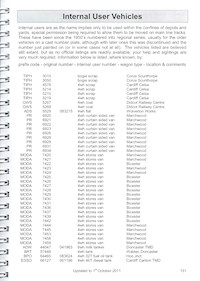
The internal user section now included all wagons, not just those with BR IU numbers. The listing was arranged by capital stock number, with the IU numbers also shown where relevant.
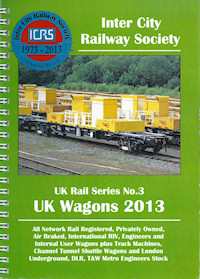
The 2013 edition had shrunk to 136 pages, through fleet reductions and changes to the layout.
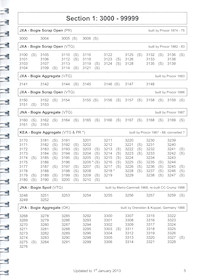
Private owner wagons now had the prefixes indicated in the batch headings, with individual variations shown using symbols.
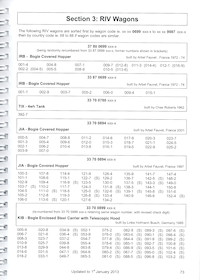
The RIV section saw major changes. Wagons were now shown in order of class (number block) then country code, and only the last four digits were listed individually.
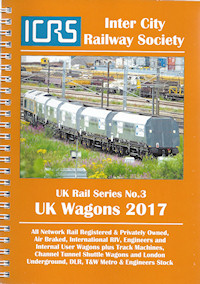
By the 2017 edition the page count had increased again to 154.
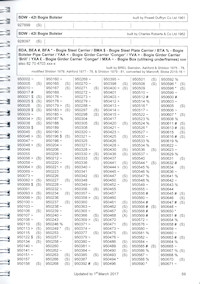
Most of the content was as before, including showing stored wagons, and TOPS code variations.
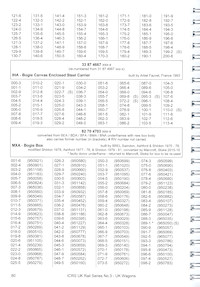
A new issue to deal with was wagons that carried two different numbers, such as the MXA conversions. Sensibly these were listed under both their original air-braked numbers and their new RIV numbers.
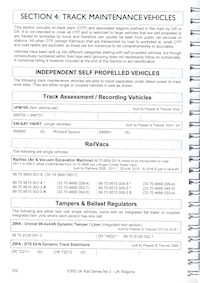
Track machines were increasingly being assigned UIC numbers, often in addition to their CEPS numbers. Because of this, they were first listed grouped by function/type, rather than in purely numerical order.
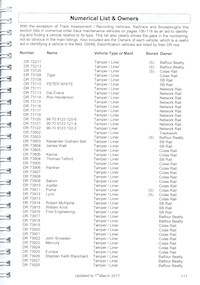
19 pages were then used to re-list the track machines in numerical order. Although arguably a bit superfluous, this listing did add ownership information for each number.

The 2019 edition was tweaked back down to just 126 pages.
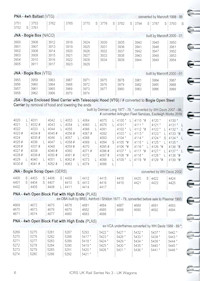
Use of a slightly smaller and narrower font meant that a lot more numbers could be shown on each page. New status codes were added for wagons stored at Long Marston (L), grounded (G) or on their way to scrapping (X).
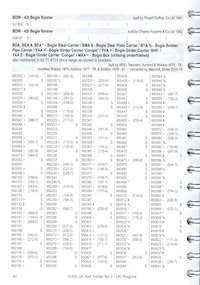
The listing of BDA and BPA wagons now gave a cross-reference to the additional number for those converted to MXAs.
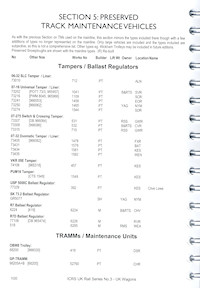
A new section covered preserved track machines and cranes.
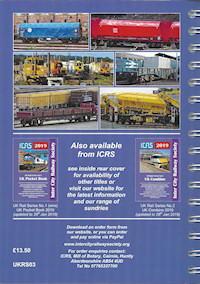
The only photos were those on the covers, the ones on the back being very small to allow space for advertising. |
| Notes: |
No notes have been left yet. ?There may be some notes posted but which have not yet been approved.
|
| Edits: | This item has not been edited.
|

 Register
Register